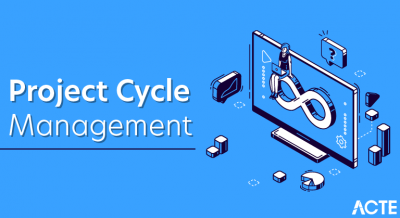
Scrum is a powerful framework for implementing agile processes in software development and other projects. This highly adopted framework utilizes short iterations of work, called sprints, and daily meetings, called scrums, to tackle discrete portions of a project in succession until the project is complete. There are three key roles within Scrum: Scrum master, product owner and Scrum team members.
Scrum master
The Scrum master is the leader of a Scrum team and is responsible for championing a project, providing guidance to the team and product owner, and ensuring all agile practices are followed by team members. The Scrum master not only addresses all facets of the agile development process but also serves the business, product owner, team and individuals and facilitates communication and collaboration between all these elements.
The Responsibilities of a Scrum Master
- Implement Project Management/Best Practices
The Scrum Master is responsible for creating and onboarding project teams, integrating them into the organization and providing a clear vision of the product. The Scrum Master also facilitates communication and information exchange between external groups and the project team. They also monitor project progress, provide timely feedback, and drive a culture of agility and learning. - Keep all Parties on Track and Informed
The Scrum Master hosts daily team meetings to get updates on the progress of the project, address potential roadblocks, and ensure that the project is on track. They also host regular sessions to share updates with product stakeholders about how the project is progressing (or not). Ultimately, it’s a Scrum Master’s job to ensure that the team is meeting deadlines with the desired outcome. - Introduce Agile Engineering Practices
To improve efficiency, Scrum Masters encourage the use of continuous integration (CI) and automation. With CI tools, developers integrate chunks of code into a central repository frequently, from which automated builds and tests run in successive iterations. This repeatable approach reduces the risk, time, and effort associated with traditional development methods. For instance, if a bug appears in one build, it can quickly be fixed in the next. Another agile technique Scrum Masters advocate is “pair programming”, where two developers collaborate in real-time and at the same workstation. Altogether, these practices reduce development time and improve the architecture and quality of the product.
Generally, Scrum masters fulfill the following responsibilities, as laid out by The Scrum Guide by Ken Schwaber:
- Leading and coaching the organization in its Scrum adoption
- Planning Scrum implementations within the organization
- Helping employees and stakeholders understand and enact Scrum and empirical product development
- Causing change that increases the productivity of the Scrum Team
- Working with other Scrum Masters to increase the effectiveness of Scrum in the organization
The Roles of a Scrum Master
Product Owner
The scrum master’s role in supporting product owners in the following aspects:
- Find methods to effectively manage the product backlog.
- Help communicate the owner’s wishlist to the project team.
- Arrange and optimize product backlog.
- Organize scrum events as necessary.
Organization
The scrum master’s role in the organization in the following aspects:
- Lead and coach scrum adoption.
- Plan scrum implementation.
- Implement changes and steps to increase the team’s productivity.
- Collaborate with other scrum masters to improve the methodologies’ efficiency.
If it’s left to the agile development team to manage the process, the question is how does the team go from working knowledge of scrum to an actual practice?
Both new and experienced teams often need a facilitator. That’s the scrum master.
The scrum master helps manage and shape:
- How the team evolves its practices over time to improve the quality and velocity of what they deliver each sprint
- How conflicts are managed and escalated.
- How the team works with product owners who are demanding new features or are reluctant to prioritize technical debt?
- How teams channel the right work to the appropriate people to be most successful.
- What should be done to help team members who are struggling to complete their stories.
The scrum master role has evolved to help development teams practice scrum, evolve the process, and improve its collaboration. Scrum masters’ primary responsibility is to service the team by demonstrating the values that make teams successful. They participate in team discussions by asking questions, making sure all voices are heard, ensuring the team is comfortable taking appropriate risks, and educating team members on scrum practices. Scrum masters are often responsible for managing blocks escalated by the team, organizing efficiently run demo meetings, and facilitating the discussion at retrospective meetings.
Scrum masters also provide services to the product owner on managing the backlog, reviewing stories, improving communications, and reporting where required. They are the intermediary between the product owner and the development team to manage conflicts around velocity, quality, or communications. Most important, they facilitate the collaboration required to identify problem statements, review implementation options, and recommend solutions when both product owner and team have to collaborate to make a successful product or service delivery to customers.
In larger organizations where agile governance is formalized, scrum masters often participate in the definition of best practices and standards. It’s common for organizations to place scrum masters strategically on the most important projects, newly formed teams, or projects that have different requirements to enable and evolve scrum practices.
Scrum master jobs
Since Scrum can be applied to virtually any organization, Scrum masters are in high demand as companies continue to look for ways to get their projects completed and their products to market faster. In fact, according to LinkedIn’s “Most promising jobs of 2017,” job openings for Scrum masters grew 104 percent year-over-year from 2016, and the career advancement score is 8 out of 10. These findings are based on the potential for career advancement, job growth, and salary. Research from the U.S. Bureau of Labor Statistics shows that, in 2018, demand for certified Scrum masters grew 24 percent.
Project management offices (PMOs) or product development departments within many business sectors hire Scrum masters to streamline their software development processes. This can include software, healthcare, aviation, technology, engineering, construction, real estate, publishing, financial, marketing, manufacturing, education, insurance, government, and others.
The following four job boards provide a good starting point for those seeking a new job as a Scrum master:
- Scrum master jobs on LinkedIn
- Recruite.net
- The Project Management Institute
- Scrum master jobs on Indeed
More on agile project management:
- Agile project management: A comprehensive guide
- Agile project management: 16 tips for a smooth switch to agile
- Scrum vs. Lean vs. Kanban: Comparing agile project management frameworks
- Agile KPIs: How to measure agile success
- Moving agile beyond IT: The secret to successful software delivery
- 8 agile certifications to take your career to the next level
- 7 simple ways to fail at agile
- Agile’s dark secret? IT has little need for the usual methodologies
- 5 misconceptions CIOs still have about agile
- Introducing the scaled agile framework (SAFe)
- Comparing scaling agile frameworks
Next read this:
- Top 9 challenges IT leaders will face in 2020
- Top 5 strategic priorities for CIOs in 2020
- 7 ‘crackpot’ technologies that might transform IT
- 8 technologies that will disrupt business in 2020
- 7 questions CIOs should ask before taking a new job
- 7 ways to position IT for success in 2020
- The 9 new rules of IT leadership
- 20 ways to kill your IT career (without knowing it)
- IT manager’s survival guide: 11 ways to thrive in the years ahead
- CIO resumes: 6 best practices and 4 strong examples
- 4 KPIs IT should ditch (and what to measure instead)
Scrum master salaries
Based on findings by the Project Management Institute’s “Earning Power: Project Management Salary Survey, Tenth Edition,” project managers working in agile/interactive/incremental project management/Scrum earn:
| Years Experience | Percent Respondents | 25th Percentile | Median | 75th Percentile | Mean |
|---|---|---|---|---|---|
| None | 31% | $85,000 | $106,000 | $130,000 | $110,319 |
| 1 to 5 | 49% | $91,000 | $132,063 | $114,522 | $142,816 |
| 6 or more | 20% | $104,000 | $125,000 | $149,000 | $128,128 |
Top Qualities of a Successful Scrum Master
- Influential
A Scrum Master leads various teams that are working on a project to achieve specific milestones and deliverables. They must be able to motivate multiple groups and stakeholders at an organizational level, maximizing the potential of all at stake. As a team leader, the Scrum Master must bridge the gap between the concept of the project and the actions required to complete it. The Scrum Master must have strong leadership and organizational skills. - Collaborative
The Scrum Master forms an essential link between the product owner and project teams. While the product owner drives the overall initiative, the Scrum Master nurtures the team. Effective collaboration between the Scrum Master and product owner ultimately result in successful products that meet the organization’s requirements. A good Scrum Master should be able to find creative ways to increase organization, collaboration, and productivity to deliver the product the business line owner requested. - Observant
The Scrum Master is not a manager, but a team member and facilitator. They should be good listeners and pay attention to the challenges the project team is facing at every step of the way. The Scrum Master should also be observant, paying attention to the team’s daily activities to gain a clear view of members’ roles and contributions in sprint sessions. - Knowledgeable
Besides resolving and issues that arise, the Scrum Master should also proactively prevent potential problems. This requires overarching knowledge about the product and process. The Scrum Master’s experience enables the team to avoid roadblocks. The Scrum Master should possess knowledge of various work formats and agile methodologies such as XP, Lean, and Kanban.





